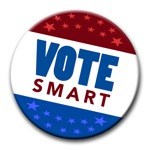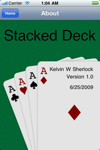 Dealing with memory and living in Las Vegas, I suppose it's inevitable that I should get around to discussing how to memorize basic blackjack strategy.
Dealing with memory and living in Las Vegas, I suppose it's inevitable that I should get around to discussing how to memorize basic blackjack strategy.
Before anything else, make sure you understand the basic rules of blackjack. If you don't get the basic rules down first, nothing else will help. Beyond just understanding the fundamental rules, you should also be aware of the rules imposed by particular casinos, and read up on the different variations when possible. For example, are those single deck blackjack games that pay 6:5 on a blackjack a good deal?
Once you understand the rules, you need to be able to learn to play effectively. This is where basic strategy comes in. Basic strategy is most familiar to people as those little blackjack charts like this. Above and beyond the strategy cards, I've even developed basic blackjack strategy T-shirts (note that the charts are printed upside-down, so you can read them while wearing them) as one solution, but it's really better to memorize them if you can.
Disclaimer: Before we continue on, remember that no method of playing can guarantee you win, which is why it's called gambling. In this article, I'm merely focusing on the challenge of memorizing basic blackjack strategy. This should not be taken as an endorsement or encouragement of gambling, and Grey Matters can in no way be responsible for any wins, losses or other consequences (including damages) that happen as a result of following the advice in this blog.
When memorizing a chart, you might think that the best approach would be to take an approach that's similar to my 400 Digits of Pi feat. However, doing blackjack strategy this way is actually twice as difficult, as there would 230 spots to memorize on such as chart.
The first rule when memorizing something is to minimize what you need to remember later. Thankfully, due to the large ranges of similar strategies in basic strategy, this is possible. The best work I've seen on minimizing basic strategy rules is in an iPhone/iPod Touch native app called Easy Blackjack Cheat Sheet (EBCS - iTunes Link), which breaks the entire chart down into 17 simple rules to remember, and it's available for free!
To give you an example, the whole approach boils down to the 4-line rhyme: SURRENDER, SPLIT, DOUBLE, HIT. In other words, you first ask yourself whether you should surrender or not, then whether to split or not, followed by whether to double or not, and finally whether to hit or not, and always in that order. For each of these rules, simple mnemonics are provided to remind you when you should take each of those actions, as well as when to ignore the decisions. For example, in the second screenshot here, you can already see that you don't think about splitting if you don't have a pair, and that the time to split 2s, 3s and 7s is only when the dealer has a 2 thru 7 showing. “2s, 3s, and 7s vs. a 2 thru 7” is pretty easy to remember.
EBCS is only a method of helping you memorize the correct play for various hands. If you're serious about memorizing basic strategy, you need to practice it during actual play, too. I've found that PepperDogSoft's Blackjack Teacher works well for this, and there are many other native apps available, as well. Instead of playing a full game, it only focuses on the initial deal and the proper choices to make. It also tracks your streaks of correct answers, and even reminds you of the length of your longest correct answer streak. Before EBCS, I had trouble getting a streak of just 3 correct answers going, but now streaks of 10 or more weren't difficult to reach less than a day after getting it.
As long you're practicing with an iPhone/iPod Touch anyway, probably the most effective approach would be to learn and practice as above. However, when you're going into a real casino game, make sure you're aware of the rules at the particular casino of your choice (the chart at that link is for Vegas only), and then use the basic strategy engine at Blackjack.info to find the best plays for that game. Usually, there are only a few plays that are different, so making up 1-3 of your own mnemonics to adjust the rules is all that's required and will be time well spent.


 4 years and 499 posts ago, on
4 years and 499 posts ago, on  Bear with me, as this is a rather unusual post for Grey Matters. Recently, I came across five things that made me feel old. Strangely, they also share a good sense of fun.
Bear with me, as this is a rather unusual post for Grey Matters. Recently, I came across five things that made me feel old. Strangely, they also share a good sense of fun. This edition of Snippets returns to the original idea, where the posts are just a good mix of links.
This edition of Snippets returns to the original idea, where the posts are just a good mix of links. It's been too long since my
It's been too long since my 
 While the blogosphere isn't exactly devoid of political posts, I thought I'd add one with a different twist - a discussion of the mathematical side of voting.
While the blogosphere isn't exactly devoid of political posts, I thought I'd add one with a different twist - a discussion of the mathematical side of voting. After I published
After I published 


